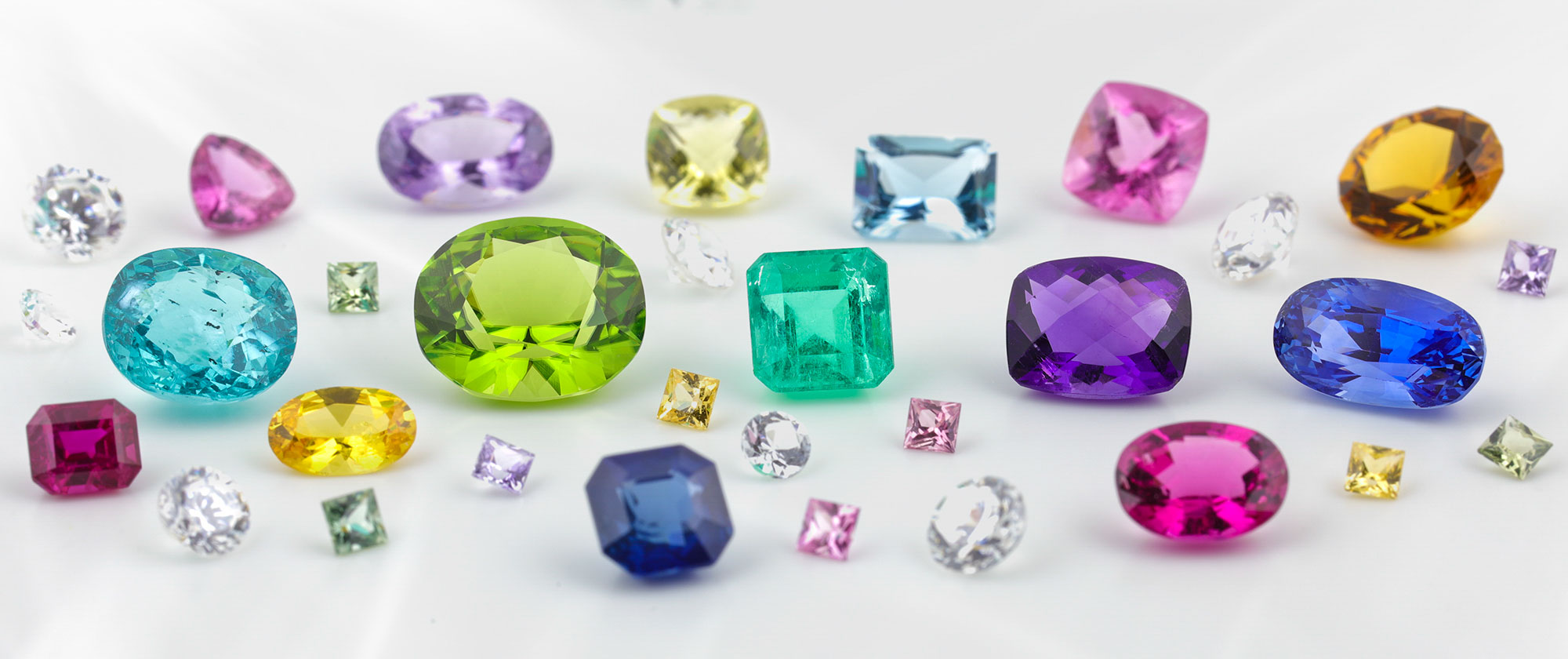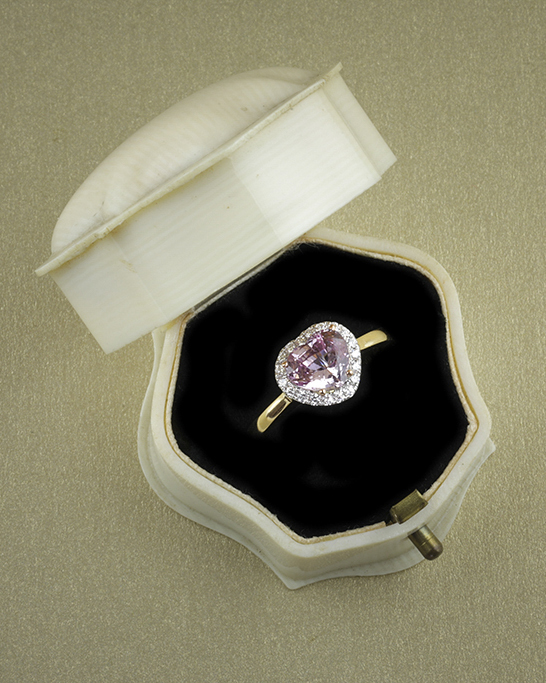Wear jewellery with consideration to what you may be doing
Removing jewellery before engaging upon activities that may bring it into contact with hard or abrasive surfaces will protect it from damage. Never wear jewellery before moving, lifting or arranging heavy items, in the house, garden or at work, or when exercising. Also remove all jewellery before any activity where your attention is reduced, such as sleeping, playing with children or caring for animals.
Never wear your jewellery in water
Water acts as a lubricant and increases the chance of loss. In addition chemicals in swimming pools, saunas, hot tubs, and salts in sea water can damage and discolour precious metals and will permanently damage some coloured gems.
Take off your jewellery before using chemicals and cosmetics
Many household cleaners contain ammonia, chlorine, or bleach, and other common solvents, which can pit precious metal alloys and etch coloured gemstones. Cosmetics, creams, and sprays will damage pearls and weaken the metals in clasps.
Water permanently damages watches
Watches (no matter how water resistant) are best kept water free by avoiding exposure to water. Watches are pressure sealed to prevent damage by water – never increase the risk by deliberately submerging your watch. Pressure in bar is a test and should not be considered as corresponding to an actual depth since movement in water increase the pressure at a given depth. In addition any pressure seal will decrease over time due to equalisation – all watches will eventually become depressurised to water.
No jewellery is indestructible – have it regularly checked and repaired
All precious metals will become scratched, and gemstones (including diamonds) can become abraded or broken. Settings or mountings can become worn – leading to structurally unsafe jewellery. During normal wear it can be expected that jewellery will become worn due to attrition – clothes and skin carry minute particles of sand or grit which erode jewellery by friction. This wear can happen extremely slowly, even to the most careful owner, right up to the point when the item of jewellery can no longer be safely worn or repaired. We therefore recommend that you take your jewellery to an appropriately qualified jeweller for regular periodic checkups, free shop cleans and polishes, loupe assisted inspections, and necessary repairs. Having your jewellery repaired is part of the ownership experience and an owner who brings their jewellery for repair is one who is caring for their jewellery.
Accidents happen
An accident is unintentional and can cause catastrophic damage from a single incident. It is a regrettable truth that an item of jewellery only needs one occasion for this kind of damage to occur – whether that it has only been worn once, dropped once, or incorrectly stored or cleaned once. If you knowingly knock, drop, scrape or compress your jewellery immediately take it off and keep it safe before taking to an appropriately qualified jeweller for advice.
Accidents happen unknowingly
Accidental damage can happen unknowingly. By brining your jewellery in for regular periodic checkups, free shop cleans and polishes, and loupe assisted inspections, you can ensure that any repairs are carried out as soon as they are identified.
Keep it clean and stored safely
Clean sparkling jewellery is more enjoyable than dull dirty jewellery. Simple procedures to keep it clean are detailed on our website. Clean jewellery also means that any deficiencies or wear will be more noticeable – allowing you to act on it quicker to prevent damage and loss. Also safely storing jewellery in boxes that feature individually padded slots for rings, and posts for hanging necklaces and bracelets will protect each item from damage.
Guarantees
A guarantee covers faults in materials and workmanship – it doesn’t cover accidental damage or damage associated with neglect. If your jewellery has a guarantee period it may still require repairing in this time and this is the responsibility of the owner.
Insure your jewellery with specialised insurance
You do not need to insure your jewellery with your household insurance provider. If you have valuable, rare or antique jewellery you should use a specialised company to provide you with cover which is wholly dedicated to ensuring your jewellery is protected against loss and damage, and could be replaced with items of the same quality and value. Please enquire in store about such providers.
Advice
For any advice on how to care, wear, store, insure, or if a repair is appropriate, we recommend that you only consult a professionally qualified jeweller . Such as a Professional Jewellers Diploma (P.J. Dip.) or those accredited as a Fellow or Member of The Jewellery Valuers Association (J.V.A.)
By looking after your jewellery you will minimise the risk of it being lost or damaged, reduce the costs associated with repairs, and increase the enjoyment you experience from it.
Specific Care for You and Your Jewellery
Some additional points to be aware of when caring for your jewellery.
Stone Settings
When a precious stone is set into an item of jewellery no heat or adhesive is used – the metal is specially shaped by hand to fit the stone exactly and then pressure is applied to push the setting onto the stone. Four common methods are used in setting:
- Claw settings: Claws have a small notch carefully cut into their length and the tip pressed on the facets. The tip is then finished to sit flush.
- Grain settings: Grain setting is used for small stones, and is where metal is carved out of a surface, rounded to a small point and pressed against the facet of a stone.
- Bezel settings: Bezel settings require the metal to be specially formed as a collar shaped rim, and it is this rim that is pushed onto the facets.
- Tension settings: Tension settings require two sides to hold the stone under pressure.
The security of the stone is defined by the rigidity of the metal and the expertise of the setter – not by the type of setting. No type of setting is ‘safer’, or more ‘practical’. The only difference is that claw settings are more likely to be noticeably worn, whereas bezel, grain, and tensions are least likely to be noticeably worn. It is because all settings become worn over time and the rigidity of the metal weakens, that stone set jewellery needs repair. Bring in any item of jewellery at any interval that is preferable to you and ask us to inspect the integrity and security of the setting.
White Gold
Gold is a naturally yellow metal. To create a white colour it is alloyed with white metals, giving it a yellowish white colour. To make a lustrous finish it is rhodium plated. This rhodium plating will wear under normal conditions, at a rate which is determined by the way in which it is worn. To return it to its lustrous condition it will require re-rhodium plating. By following the advice outlined above on how to look after your jewellery you will minimise the wear to your jewellery.
Full Eternity Rings
Full eternity rings have part of the setting which is on the palm side of the hand. This is more likely to be brought into contact with hard and abrasive surfaces (for example, hand rails, car door handles or anything which is lifted, grasped or held). This type of setting can be unknowingly damaged, and therefore requires considered wear. You should bring in your jewellery for regular inspections and check-ups.
Multiple items of Jewellery
Wearing multiple items of jewellery (many necklaces, or more than one ring per finger) will endanger your jewellery. If necklaces are worn together they will strike one another, tangle, and put strain on the links. If multiple rings are worn next to one another (on the same finger or neighbouring fingers) the sides of each ring will wear due to rubbing. You should never wear jewellery in this way.
For wedding and engagement rings you can minimise this wear by having the rings made from the same metal and alloy. You should also try to make sure they are shaped to fit together as flush as possible. We make many bespoke wedding rings, so please enquire about having a bespoke wedding ring made.
Foreign Made Jewellery
British made jewellery has to meet very controlled manufacturing specification; the quality and consistency of casting, the fineness of an alloy, and the setting of stones all have to meet strict quality standards and durability tolerances. Jewellery made outside the UK may not benefit from these considerations, and may mean that they cannot be worn or repaired in the way a British item could be. You should bring in your jewellery for regular inspections and check-ups.
Antique Jewellery
The very fact that an antique piece of jewellery exists is testament to the consideration of prudent ownership – it is your duty to continue this provision of care.
As well as following the guidance outlined above it is advisable to wear this jewellery in a similar fashion as how it was originally designed. The only people who could afford jewellery would have been those that employed servants – they would never have performed domestic or manual duties, and would wear their precious jewels for societal events or special evenings. The jewellery would also have been regularly cleaned, inspected for deficiencies and repaired as required.
Watches
A mechanical watch should be regarded as perfectly functioning if (when worn in normal conditions) it holds ± 3 minutes a day, and quartz watches to an accuracy of ± 10 seconds per day. This applies to all makes of watches. Any lesser accuracy, over a continuous period of more than seven days, is an indication of requiring a service.
A watch that is dropped or struck (on any surface) will have its functions affected by the impact. You should always ensure that a bracelet clasp is secured and a pocket watch is properly attached with a chain.
Follow the above advice about avoiding water. If you do have a diving watch make sure it is properly washed after use in fresh water and thoroughly dried to prevent rusting of the bracelet pins. The high pressure seal of a diving watch will decrease over time due to equalisation – and you should be retested every two years. Even if it is a diving watch never wear it the shower, sauna, or bath where extreme change in temperature occurs as this could cause the gasket to expand at different rates making your watch vulnerable to water penetration.
Keep your watch clean – skin oils and sweat are acidic and will pit the case, rust bracelet pins, and erode the gasket. Follow advice on our website about how to safely clean a watch.
Durability, Stability and Cleaning of Gemstones (and watches)
Every gemstone is unique and every type of gemstone requires specific considerations. Please refer to our website for guidance on the durability, stability, and cleaning of gemstones.
Advice and Reliance on Information
We are always happy to give advice, which is intended to help you. Verbal advice is not intended to replace the service of legally contractually written documentation, or to be a substitute for legal advice offered by a qualified specialist. For advice, information or commentary on which reliance needs to be based a specifically set forth contractual agreement, entered into writing should be sought.
If we have offered advice to the condition of an item it only applies to the day in which it is on our premises. The condition of the jewellery once it has left the shop depends wholly on the way in which it is cared for – as such it is the responsibility of the owner to ensure it is not damaged or lost.


